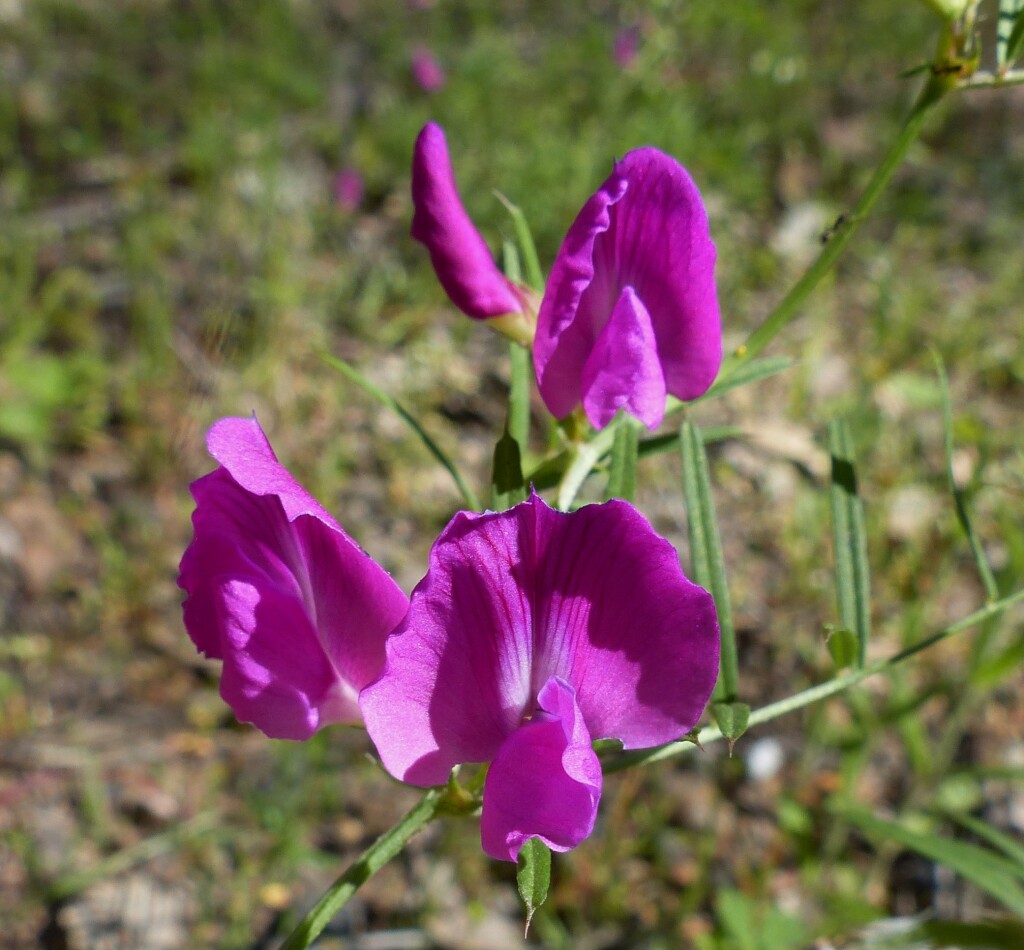Vicia
Annual, biennial or perennial herbs; stems terete, trailing, erect or climbing. Leaves alternate, mostly paripinnate, subsessile, terminating in a tendril (in Victoria) or bristle; leaflets few-many, linear, oblong or elliptic, entire, cuneate at base; stipules linear, lanceolate or semi-sagittate, entire or toothed. Inflorescence axillary; flowers 1–many in pedunculate racemes; bracts small, caducous. Calyx cylindric or campanulate, 5-toothed, regular or oblique at apex, teeth about as long as tube, more or less equal or upper 2 partly connate; petals blue, purple or yellow, clawed; standard obovate or oblong, emarginate; wings obovate or oblong, usually adhering to keel; keel obtuse; stamens diadelphous, anthers uniform; ovary subsessile, style terete or compressed, pilose or with a hair tuft at apex, stigma terminal, ovules 2–many. Pod terete or linear and compressed, more or less straight, continuous within, dehiscent; seeds arillate.
About 150 species from temperate parts of the Northern Hemisphere and South America; 8 species naturalised in Australia.
Jeanes, J.A. (1996). Fabaceae. In: Walsh, N.G.; Entwisle, T.J., Flora of Victoria Vol. 3, Dicotyledons Winteraceae to Myrtaceae, pp. 663–829. Inkata Press, Melbourne.
 Spinning
Spinning


